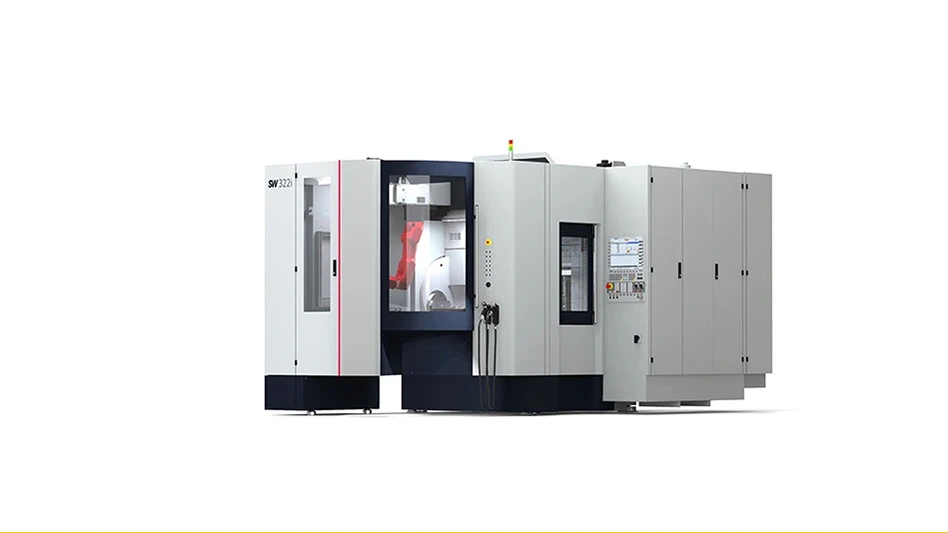 The newly designed liner secured inside the rotor housing."With a part this size, spinning at 3,200rpm, it is always tricky. That is why it is nice to have a proof of concept part fast. This way you can test it, answer some questions, and move on."
The newly designed liner secured inside the rotor housing."With a part this size, spinning at 3,200rpm, it is always tricky. That is why it is nice to have a proof of concept part fast. This way you can test it, answer some questions, and move on."
Speaking is Tom Pearce, senior designer at CaridianBCT, Lakewood, CO, about the company's new linear component. CaridianBCT designs and manufactures automated blood collection systems, apheresis systems, whole blood processing systems, and cell expansion systems.
For a recently designed blood-processing system project, Pearce and his engineering team needed a large container (liner) that could hold blood product bags while inside a high-speed centrifuge. The liner would be an important component in a larger system that separates whole blood into three separate components: red blood cells, platelets, and plasma.
The liner that Pearce and his engineering team designed had to withstand the centrifuge as it spun at 3,200rpm. The liner also needed to be removable for easy servicing and cleaning. Because of these and other design parameters, the engineering team elected to create a one-piece unit with four individual compartments to process four units of blood instead of the single-unit processing capabilities of previous designs, increasing throughput in a lab or hospital setting. The limitation of the previous system was simply due to expected throughputs at the time of design. Once labs began to see the value in the system, higher throughputs were needed, and since other parts of the system could handle the change, the four-compartment design was created. CaridianBCT took this opportunity to provide additional benefits to the liner.
 Designed to allow for the high speeds of centrifuge use, the cavity liner maintains a strong sense of integrity. A nylon prototype of the component was made using selective laser sintering (SLS), a process that uses a high-temperature laser to melt and fuse, or sinter, powdered plastics or metal into a 3D part. This is done layer by layer inside the SLS machine. When compared to other methods, SLS has a wide range of material choices, including filled thermoplastics, which is why Pearce and his team chose SLS.
Designed to allow for the high speeds of centrifuge use, the cavity liner maintains a strong sense of integrity. A nylon prototype of the component was made using selective laser sintering (SLS), a process that uses a high-temperature laser to melt and fuse, or sinter, powdered plastics or metal into a 3D part. This is done layer by layer inside the SLS machine. When compared to other methods, SLS has a wide range of material choices, including filled thermoplastics, which is why Pearce and his team chose SLS.
"The present liner that we are using has been evolving over the last three years," Pearce says. "The original component was a single cavity design made as a cast urethane part. The new system required four of them.
"The overall design for the four liners worked really well in the early stages of design testing, but to reduce our parts count and allow for better containment of liquids, and better cleaning capabilities, the original liner was redesigned into the single piece."
The team started with a design that would provide the increased functionality that they needed. In this case, it was as a four-chamber liner/product bag holder. The concept was drawn up using a 3D CAD program that would also export a 3D stereolithography file in an STL format. Pearce downloaded the STL file from the CAD system to the ZoomRP.com website for a quick quote. Pearce liked the quote and ordered the part right from their website.
 The four segmented liners will not only withstand speeds of over 3,200rpm, they are easy to remove for cleaning, an integral part of the design of the whole blood processing system. The new liner component went through only two iterations of prototypes to achieve the part used in CaridianBCT test systems.
The four segmented liners will not only withstand speeds of over 3,200rpm, they are easy to remove for cleaning, an integral part of the design of the whole blood processing system. The new liner component went through only two iterations of prototypes to achieve the part used in CaridianBCT test systems.
"We left the SLS Nylon components white, which is the color they are when they are removed from the SLS machine," Pearce explains, adding that the parts were actually used as-built, with no secondary finishing or machining.
Another advantage in using ZoomRP.com was fast turnaround. "We found that critical proof of concept parts could be acquired in a few days instead of in two weeks, per some of our quotes," Pearce says.
For small parts there is an overnight delivery, and for the liners a two-business-day delivery. Competitors would have taken seven to 14 days, according to proposals that Pearce received.
In addition to providing accurate and inexpensive components, ZoomRP.com was selected for its materials and part-size capabilities. The liners were 10.750" in diameter by 9.600" deep, and had to have a 0.120" uniform wall. Pearce found that ZoomRP.com could cover the whole spectrum of his needs for the project.
"Suffice it to say that all tolerance specs that we designed in were met by ZoomRP.com's prototypes," Pearce says. "Small parts were quoted upon uploading, while large parts took about 15 minutes."
The project in a word: "Easy," Pearce concludes.
ZoomRP.com Valencia, CA
CaridianBCT Lakewood, CO caridianbct.com/location/north-america/Pages/home.aspx

Explore the September 2011 Issue
Check out more from this issue and find your next story to read.
Latest from Today's Medical Developments
- Tariffs threaten small business growth, increase costs across industries
- Feed your brain on your lunch break at our upcoming Lunch + Learn!
- Robotics action plan for Europe
- Maximize your First Article Inspection efficiency and accuracy
- UPM Additive rebrands to UPM Advanced
- Master Bond’s LED415DC90Med dual-curable adhesive
- Minalex celebrates 60 years of excellence in miniature aluminum extrusions
- Tormach’s Chip Conveyor Kit for the 1500MX CNC Mill





